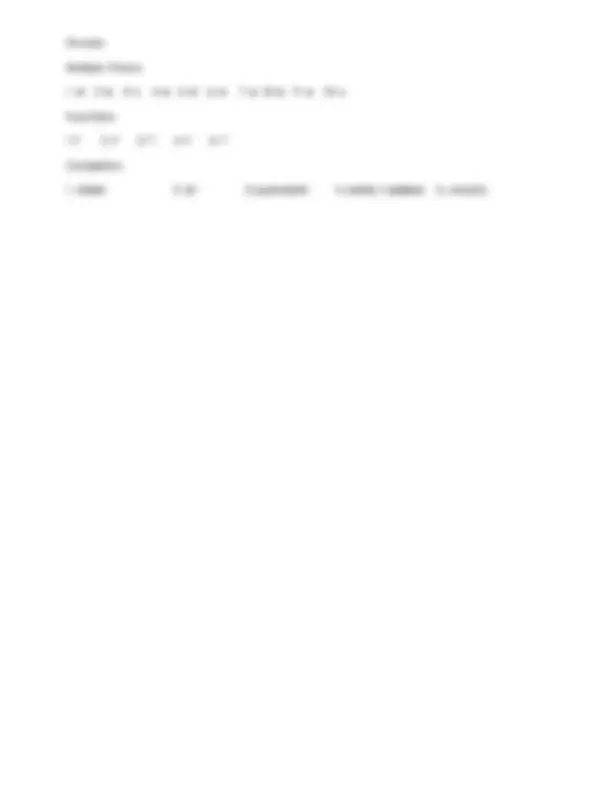
Quiz: Volcanoes
Part One: Multiple choice - Select the best answer to each question.
1. Granitic magma is highly viscous because:
a. of its high water content b. it is mafic
c. of its high melting point d. its long silica chains become entangled
2. Basaltic lava with numerous holes that give it a jagged, rubbly surface is
a. pahoehoe b. aa c. plutonic d. granitic
3. The gentlest, least catastrophic type of volcanic eruption occurs when magma is so fluid that it
simple oozes from cracks to form:
a. cinder cones b. nuée ardente c. flood basalts d. calderas
4. The "ring of fire", a zone of concentrated volcanic activity encircling the Pacific Ocean basin, is
located directly over:
a. subduction zones b. rift zones c. hot spots d. the San Andreas fault
5. Which magma type has the most violent eruptions?
a. basaltic b. Hawaiian c. Icelandic d. granitic
6. The largest intrusive body (pluton) is called:
a. batholith b. laccolith c. dike d. sill
7. Pyroclastics include all of the following except:
a. pahoehoe b. ash c. lava bombs d. cinders
8. Which of the following volcanoes is a shield volcano?
a. Mt. Saint Helens b. Mauna Loa c. Parícutin d. Mt. Fuji
9. A tabular pluton that cuts across sedimentary layers is called a:
a. dike b. sill c. laccolith d. batholith
10. Which type of volcano is composed of layers of intermingled lava and pyroclastics?
a. Cinder Cone b. Shield c. Composite d. All of these
Part Two: True/False
1. ____ The higher the silica content of magma the easier it flows.
2. ____ Cinder Cone volcanoes are larger than Composite Cone volcanoes.
3. ____ Pahoehoe and aa are words that describe the texture and appearance of basaltic lava
flows.
4. ____ Craters are very large calderas.
5. ____ A fumarole is a type of volcanic fissure from which only gases are emitted.
Part Three: Short Answer
1. The type of volcanoes formed from fluid lava with a large broad shape are ___________
volcanoes.
2. A tabular pluton (intrusive body) that forms when lava oozes between layers of rock is called a
____________.
3. Material which is violently ejected from a volcano is termed ___________________ material.
4. Located at the summit of many active volcanoes is a steep-walled depression called a(n)
________________.
5. The measure of a fluid's resistance to flow is called __________________.










